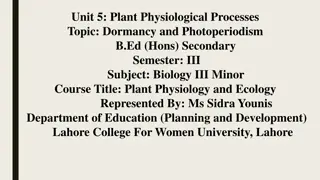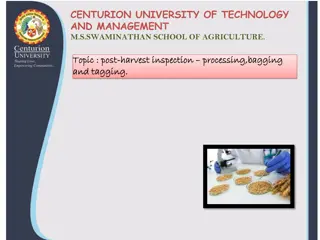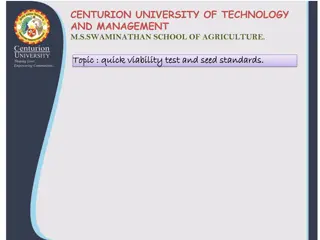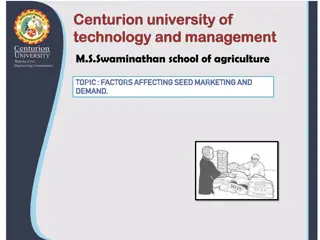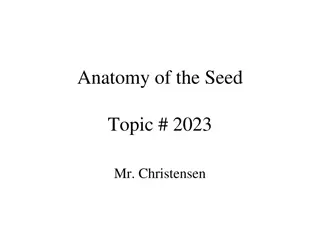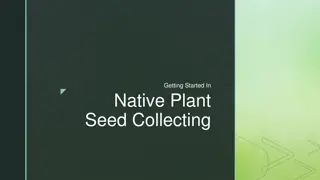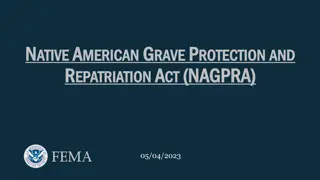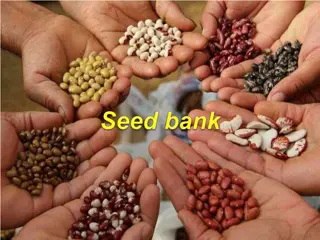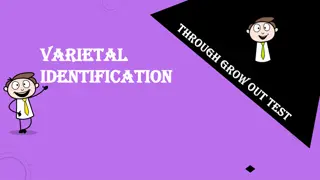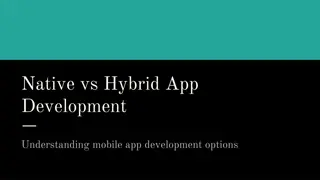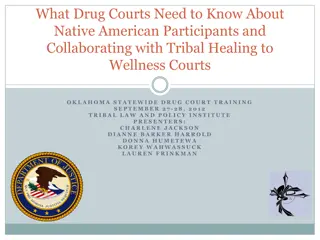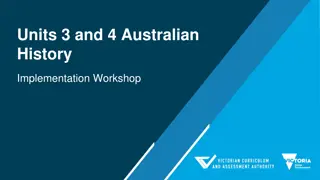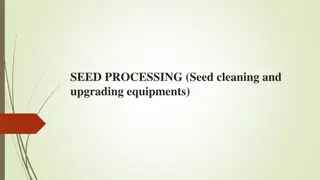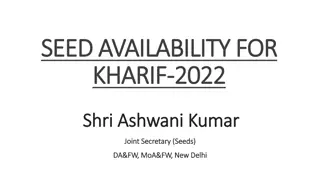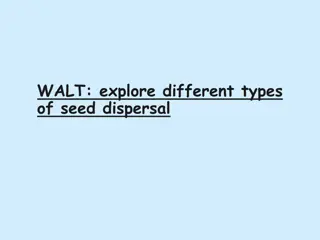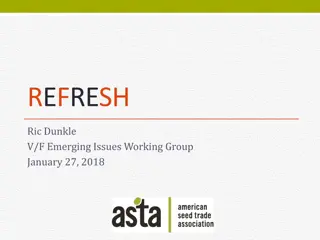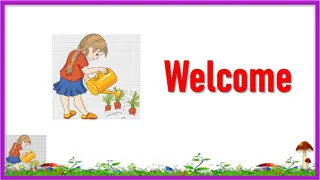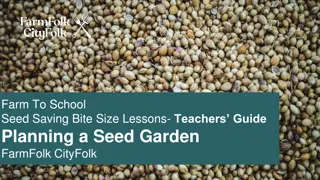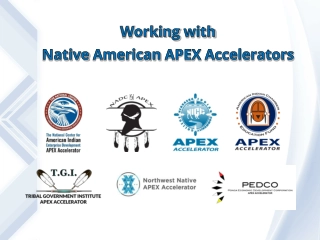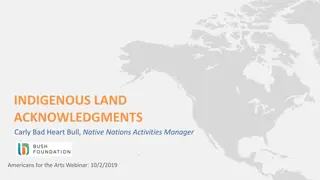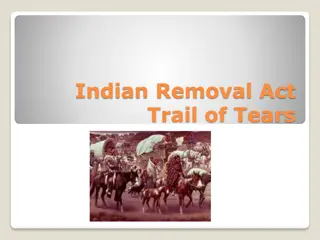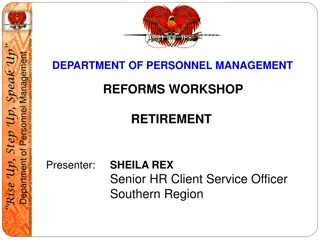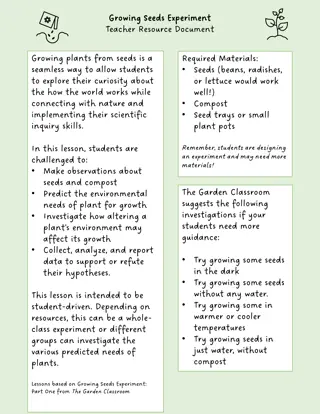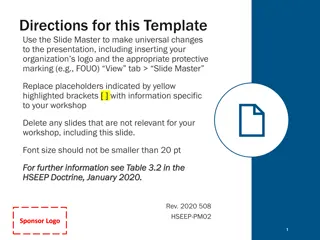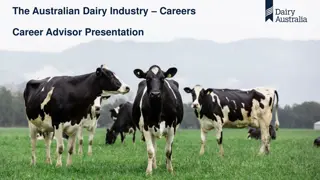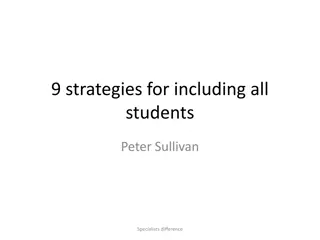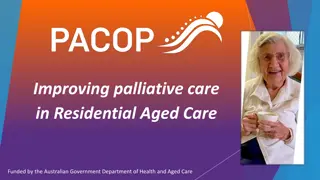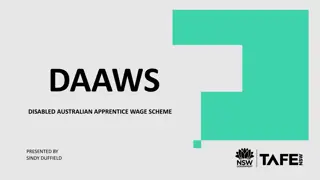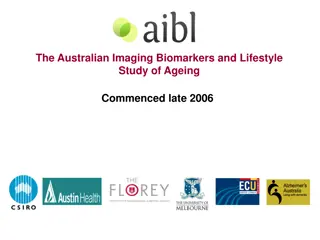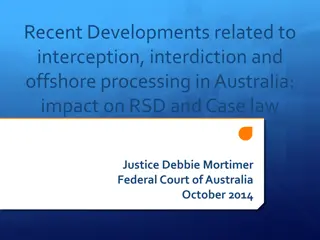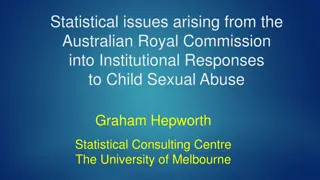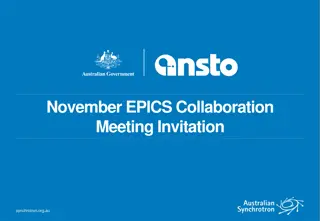Australian Native Seed Strategy Design Workshop Summary
Challenge Accepted! The Australian native seed sector aims to preserve and utilize the diverse plant species and genetics for future generations. Key points from the workshops emphasize the need for coordination, accessible training, information consolidation, and user connections. The sector faces challenges in capacity, demand signal consistency, training access, and alignment of specifications. Collaboration, standards, and networks are crucial for sustainability. Stay tuned for more updates on this exciting initiative!
Download Presentation

Please find below an Image/Link to download the presentation.
The content on the website is provided AS IS for your information and personal use only. It may not be sold, licensed, or shared on other websites without obtaining consent from the author. Download presentation by click this link. If you encounter any issues during the download, it is possible that the publisher has removed the file from their server.
E N D
Presentation Transcript
NATIVE SEED STRATEGY NATIVE SEED STRATEGY DESIGN WORKSHOP #11 DESIGN WORKSHOP #11 NATIONAL 2PM-4PM 28 APRIL 2021
DESIGN WORKSHOPS DESIGN WORKSHOPS R&D 19 April Conservation 19 April Capability 20 April Supply 20 April Demand 21 April NSW 21 April Queensland 22 April WA Victoria 26 April ACT/Tas/SA/NT 27 April 22 April National 28 April National 11 May National 12 May National 13 May
AGENDA AGENDA THIS Your say on the strategy s 1 MEETING IS BEING RECORDED Purpose 2 Opportunities/challenges 3 Governance
WORKSHOP PROCESS WORKSHOP PROCESS 5 agenda items Capturing everyone s views Break-out rooms (*) Use the chat-box Be succinct No need to repeat Respect differences and process Polls Findings to date Themes Ways to get there Pillars* Binding glue Quality Who owns it? Governance Staying in touch Comms
THEME WORKSHOPS SUMMARY THEME WORKSHOPS SUMMARY
CHALLENGE ACCEPTED CHALLENGE ACCEPTED Seedbanks continue to make the full diversity of Australian native plant species and their genetics available for posterity and active use The Australian native seeds sector attracts the resources to sustain its skills and capacity to respond when required
KEY POINTS FROM THEMES KEY POINTS FROM THEMES R&D Conservation Capacity Supply Demand Plenty of capability but coord falls away Demand signal variable and inconsistent Affordable accredited training end2end Collectors and sites access constraining Growing, patchy more than just envt l outcomes It s time to consolidate info and put to use Hardest part of sector to remain viable Accessible networks, brokers and exchanges Coordination inventory and systems Specification timing and results don t align Capability constrained partners +/- Widespread on-going promotion Fit for purpose specifications and CoP needed Standards, info sharing and CoP needed Need themes and user connections
QUALITY QUALITY Information for modular/flexible standard there It s time to lead with CoP and labelling Needs promotion and education Active in trading, regulation and training
GOVERNANCE GOVERNANCE Need industry body Strategy objective is to have one Sector Committee needs to be PPP Who sponsor is unclear Strategy Probably network Linked to CoP and exchange Knowledge fora
STRATEGIC DESIGN PILLARS COVER FIELD STRATEGIC DESIGN PILLARS COVER FIELD Information provision Quality and standards Smarter regulation Capacity building Research & development What is the quality of available native seed Developing skills and infrastructure to sustain/expand Fundamental R&D on properties and potential Where and when is native seed needed Access to and sustaining seed sources Ensuring native seed can be used widely and appropriately Enabling and promoting the wider use of native seeds Where and from whom is native seed available Best practice standards for using native seed Technology and applied R&D for sector use
DESIGN PILLARS DESIGN PILLARS
NATIVE SEED VALUE CHAIN NATIVE SEED VALUE CHAIN Sources Stores Suppliers Users Enablers Government regulation and funding Conservation seedbanks Not for profit organisations Private landholders Public estate Government led networks and agencies Indigeneous lands Seed production areas Commercial businesses Infrastructure agencies Public orgs and trading enterprises Not for profit led networks + organisations Commercial seedbanks Public land managers Private property
WHO WANTS NATIVE SEEDS WHO WANTS NATIVE SEEDS Markets Use Users Rehabilitation Site remediation Resource & infrastructure Conservation Locations & threatened Public/private orgs & indiv. Horticulture Food, ornamental & new Food and greenlife Indigenous Cons., culture, commerce Indig. Orgs. & partners Off-setting Biodiversity & carbon seq. Land managers & brokers Forestry Wood products Plantation managers
STRATEGIC DESIGN PILLARS STRATEGIC DESIGN PILLARS Information provision Quality and standards Smarter regulation Capacity building Research & development What is the quality of available native seed Developing skills and infrastructure to sustain/expand Fundamental R&D on properties and potential Where and when is native seed needed Access to and sustaining seed sources Ensuring native seed can be used widely and appropriately Enabling and promoting the wider use of native seeds Where and from whom is native seed available Best practice standards for using native seed Technology and applied R&D for sector use
BREAK BREAK- -OUT DISCUSSION QUESTIONS OUT DISCUSSION QUESTIONS Which pillars have the great potential to develop the sector? Who are the key industry, government and community leaders in this state/territory?
TIME FOR A POLL TIME FOR A POLL
BREAK BREAK- -OUT DISCUSSION QUESTION OUT DISCUSSION QUESTION What is constraining your organisation? Clear demand and policy signals Maintaining motivation Access to (skilled) staff and volunteers Equipment Knowledge and systems Partners and networks Access to native seed supply
TIME FOR A POLL TIME FOR A POLL
QUALITY QUALITY
QUALITY QUALITY Quality underpins development Requires standards That are owned and used Quality systems need to evolve A mark can signal quality A code of practice is way to start improving access and quality Drivers Barriers Viable seed Cost Right seed Which std Right source Not used
DISCUSSION DISCUSSION Do you support the development of a national Code of Practice for the Native Seed and Plant Sector? Do you support a Code of Practice forming the basis for labelling the quality of native seed supplied to users? Do you support a Code of Practice as an alternative to current licensing and regulation? Do you think the Code of Practice should be voluntary or be used as a form of compliance? Do you think a Code of Practice could create more red tape for small business?
TIME FOR A POLL TIME FOR A POLL
GOVERNANCE GOVERNANCE
NATIVE SEED INDUSTRY BODY NATIVE SEED INDUSTRY BODY Industry needs to be able to represent itself Build off existing or new options Strategy goal is to have one Range of roles it can fulfill Advocacy Standards Training Brokerage Accreditation Promotion
DISCUSSION QUESTION DISCUSSION QUESTION Do you support establishing an industry body for the sector? What should the industry body do? How can this be achieved?
TIME FOR A POLL TIME FOR A POLL
MISSION AND OVERSIGHT MISSION AND OVERSIGHT collaborative business model to govern and drive the Strategy oversight by: a sponsor with capacity to convene and support the committee cross-sectoral representation diversity of skills and relationships Mission objectives Oversight Committee Knowledge Sharing Consortia Program 1 Program 2 Program 3 Project Project Project Project Project Project Project Project Project
DISCUSSION QUESTIONS ON OVERSIGHT DISCUSSION QUESTIONS ON OVERSIGHT Who should be the oversight committee? Who should be the sponsor?
COMMUNICATIONS COMMUNICATIONS
HOW SHOULD WE COMMUNICATE WITH YOU? HOW SHOULD WE COMMUNICATE WITH YOU? How would you like to be kept up to date as the project develops? Who are the relevant stakeholder groups that need to be engaged? What communications and engagement opportunities do you see?
TIME FOR A POLL TIME FOR A POLL
SUMMARY OF POINTS SUMMARY OF POINTS
NATIONAL WORKSHOP SUMMARY NATIONAL WORKSHOP SUMMARY Pillars are accepted, no clear gaps. Most potential: quality, information (demand signal, policies), capacity Need coordination (industry body) and support to grow (including funding and incentives for landholders) Key players: Cwth/state governments (drivers of demand) Constraints: market signal, knowledge/systems, consistency Codes of Practice: transparent, supplementary to standards, basis for labelling, willingness to pay Governance: advocacy/standards, requires funding/recognition/acceptance, national coordination/regional implementation, leverage existing bodies, be representative
THANK YOU THANK YOU YOUR PERSPECTIVES WILL INFORM THE STRATEGY PLEASE EMAIL REFLECTIONS/THOUGHTS TO NATIVESEED@ACILALLEN.COM.AU OR L.BAKER@ACILALLEN.COM.AU


